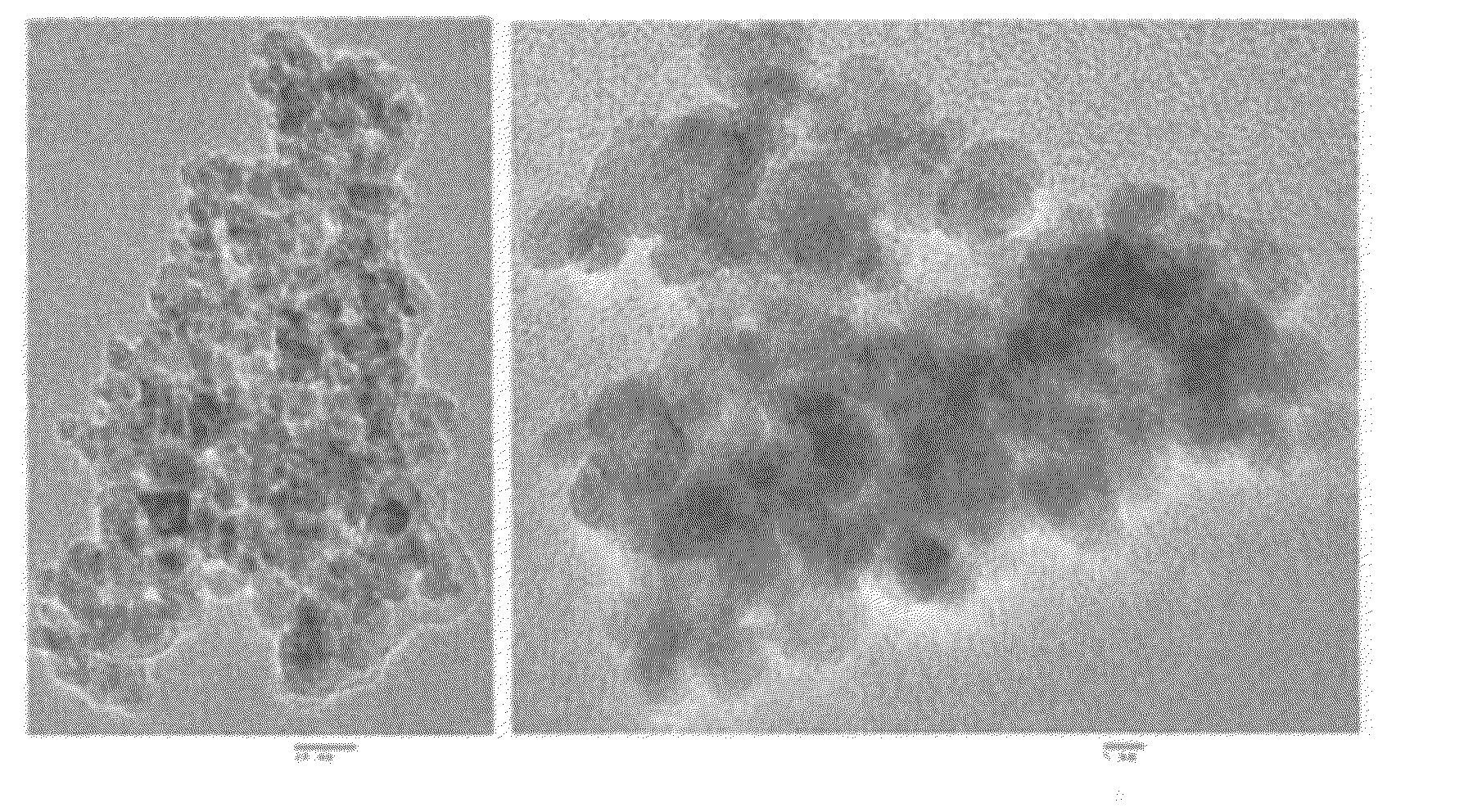Core-Shell Magnetic Particles and Related Methods
a magnetic particle and core shell technology, applied in the field of core shell magnetic particles, can solve the problems of particle dissolution under environmental conditions, loss of magnetization of particles over time, and inability to use aqueous remediation, microemulsion synthesis of nanoparticles in accordance with u.s. pat, etc., to improve anti-static performance and remove toxic pollutants
- Summary
- Abstract
- Description
- Claims
- Application Information
AI Technical Summary
Benefits of technology
Problems solved by technology
Method used
Image
Examples
example 1
Synthesis and Characterization of Core-Shell Magnetic Nanoparticles Functionalized with Thiol Groups
Particle Synthesis
[0233]The synthetic route applied to obtain the encapsulated particles herein resulted from numerous optimization efforts and consists of three essential steps as shown in FIG. 1.
1. Magnetite Stabilized by Tetramethylammonium Hydroxide (TMAOH).
[0234]An aqueous solution of FeCl3.6H2O (7.58 g, 28 mmol) and FeCl2.4H2O (2.78 g, 14 mmol) was brought to 80° C. under continuous nitrogen purge within approximately 20 min. The solution was poured into 25 mL of 30% aqueous solution of NH4OH and the ensued precipitate was stirred and kept in a sealed reactor at 80° C. for 1 h. The resulting particle suspension was sonicated for 1 min and particles were separated by magnetocollection and suspended in 30 mL of 0.33 M tetramethylammonium hydroxide. The suspension was observed to be stable. The above steps were repeated three times and the resulting fractions were combined to obtai...
example 2
Remediation Processes Using Core-Shell Magnetic Nanoparticles Described in Example 1
[0242]Magnetic Separation-Assisted Removal of Methylmercury Chloride from Water
[0243]Stock solutions of methylmercury chloride (MeHg) were prepared by dissolving approximately 100 mg of MeHg in deionized water. Dissolution resulting in a transparent solution occurred within approximately 7 to 10 days at room temperature with periodic shaking. The stock solution was diluted accordingly to result in either 82 ppm (mg / L) or 9640 ppb (μg / L) initial concentrations. Thoroughly measured aliquots of 7 mg / mL suspension of thiolated core-shell nanoparticles according to Example 1 were placed in tubes followed by lyophilization of the suspensions in the same tubes. Then 40 mL of MeHg stock solution was added into each tube, the tubes were briefly sonicated to resuspend nanoparticles, and the resulting suspensions were shaken at 200 rpm for 10 days at room temperature, to ensure equilibrium uptake of MeHg. The m...
example 3
Synthesis of Core-Shell Magnetic Nanoparticles Modified with Biguanide
[0249]Poly(hexamethylene biguanide) (PHMBG) was obtained from Arch UK Biocides Ltd. (Manchester, UK), supplied as a 20 wt % aqueous solution (Cosmocil CQ) with a reported MW of 2674 and a polydispersity of 1.89. The solution was dialyzed against deionized water (MWCO 2 kDa) and lyophilized to dryness. After dialysis, the MW and polydispersity were 2810 and 1.69, respectively. The PHMBG chain on average consisted of 7.3 repeating units.
[0250]Magnetite-silica core-shell particles functionalized with PHMBG (PHMBG-M / SiO2) were synthesized in three consecutive steps (FIG. 1). First, magnetite particles were prepared and were well-dispersed in water with the aid of tetramethylammonium hydroxide (TMAOH). Second, the magnetic particles were encapsulated by a shell comprising tetraethyl orthosilicate (TEOS) and epoxy-functional 3-glycidoxypropyl trimethoxysilane (GPTMS). The third step was the binding of the epoxy groups o...
PUM
| Property | Measurement | Unit |
|---|---|---|
| size | aaaaa | aaaaa |
| sizes | aaaaa | aaaaa |
| sizes | aaaaa | aaaaa |
Abstract
Description
Claims
Application Information
 Login to View More
Login to View More - R&D
- Intellectual Property
- Life Sciences
- Materials
- Tech Scout
- Unparalleled Data Quality
- Higher Quality Content
- 60% Fewer Hallucinations
Browse by: Latest US Patents, China's latest patents, Technical Efficacy Thesaurus, Application Domain, Technology Topic, Popular Technical Reports.
© 2025 PatSnap. All rights reserved.Legal|Privacy policy|Modern Slavery Act Transparency Statement|Sitemap|About US| Contact US: help@patsnap.com



